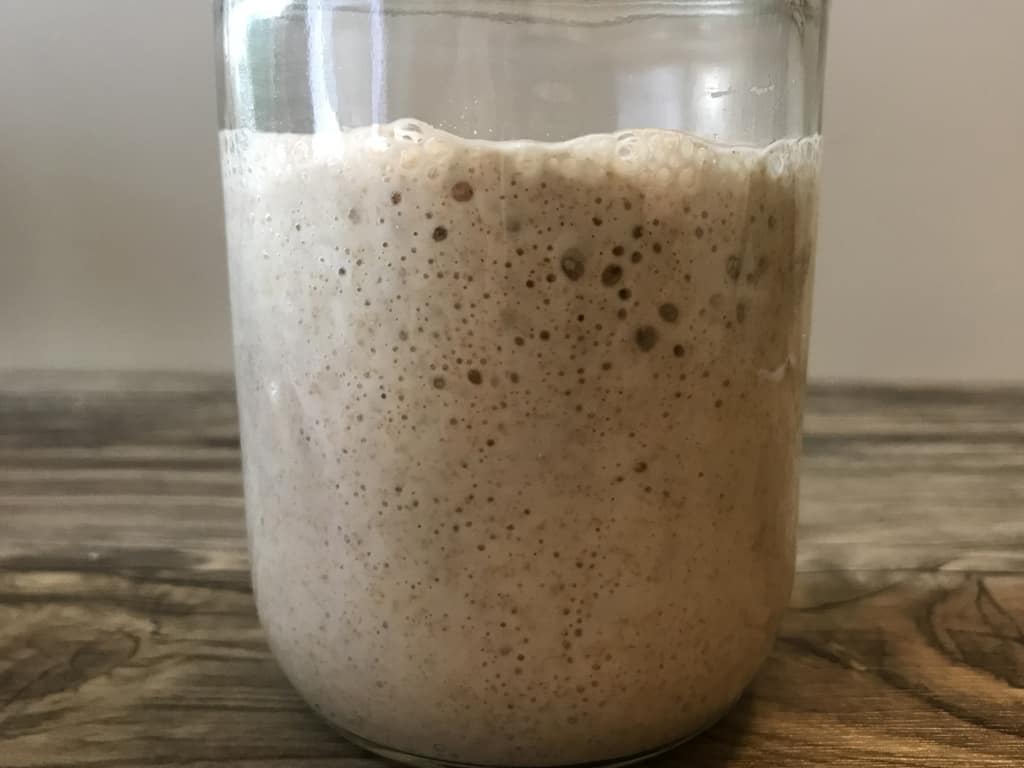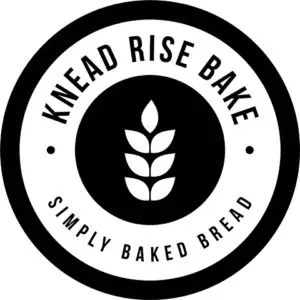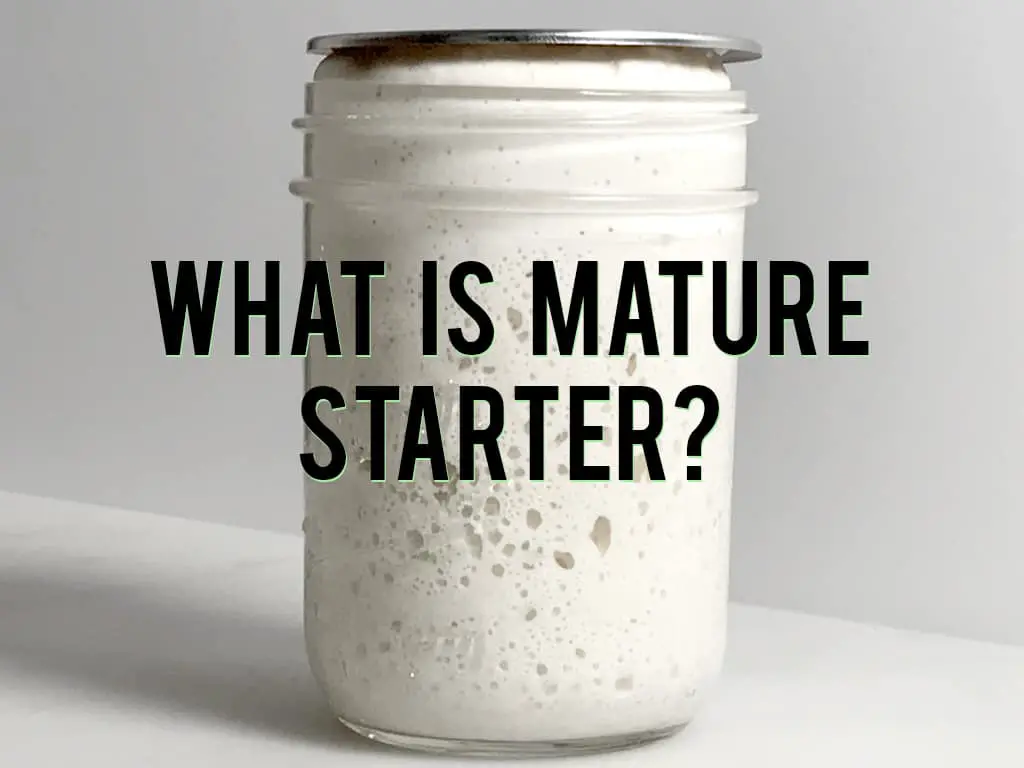Many sourdough recipes call for a mature starter or a ripe starter. The only problem with that is, many recipes don’t explain what those terms mean. I’ve said this so many times I’ve lost count, but once you’ve been in a craft long enough you forget how many terms only make sense to insiders.
So, it takes some folks to help bridge the gap and pull people in. Hopefully our post helps get you on the inside!
A mature starter, also called a ripe starter, is one that has been fed water and flour and allowed to rise to its peak height. The best way to ensure a starter is mature is to use it right when it starts to fall from its rise.
With all things in the bread world, there tends to be some overlap in how terms are used. We’ll address this shortly. But first, let’s talk more about what a mature and ripe starter is and why most recipes call for it.
What Exactly is a Mature or Ripe Starter?
As stated above, a mature starter is one that has been fed and allowed to rise to it’s peak. This is also called a ripe starter. The two terms are interchangeable.
And they both relate to the potency and activity of a starter. The longer sourdough starter goes without being fed, the more “sleepy” it will become. Another way to say it is, lethargic. Yeast blows through nutrition quickly, and really becomes quite sluggish until they are given more to “eat”.
Once a starter is refreshed with extra flour and water, yeast goes right back to work, primarily eating and excreting gas (co2) and alcohol. This helps raise and flavor the starter.
If given enough time, yeast will cause starter to rise to double or even triple in size depending on how wet or stiff your starter is combined with how much “food” it was fed.
However, once a starter reaches it’s full peak height it is safe to assume that the yeast inside is starting to run out of nutrition. At this stage they will have been woken up from their lethargic state, and ready to consume more “food”. In short, it’s ready to go in your bread dough.
If, however, the starter is left so that it falls all the way back down, the yeast inside will go back into their sluggish state. They will need to be given another round of “food” before becoming active again.
So catching the rise at it’s peak ensures that yeast are active and ready to keep eating.
However, you do not need a mature or ripe starter to make sourdough. We often make sourdough with an unfed starter. It takes longer but produces a delicious loaf of bread.
Having a mature starter simply speeds up the time in which it takes for your bread to go through its rising stages. Which is why it is important to have a ripe or mature starter if the recipe calls for it. Otherwise, you’ll have a hard time following the times in the recipe.
Alternative Meanings of Mature and Ripe

In most recipes, what we mentioned above will apply. However, when you’ve created a brand new starter, the terms change a bit.
If new starters are what is being discussed, mature is speaking about the total age of the starter. A brand new starter is typically only considered to be mature once it has gone through a month or two of regular feedings. This has to do with brand new starters being less robust and stable than mature or aged starters. We use the term mature when we are referring to this stage, but aged and stable are the better and clearer terms.
But, even though the starter isn’t aged yet, doesn’t mean it cannot be mature in the context of baking a batch of bread. It can be confusing, we know.
Also, in this new starter stage, ripe is often speaking towards the completion of the process. Recipes for creating a new starter might often say things such as, “When the starter is fully ripe…”, which is referring to when it is ready to use in baking.
A fully ripe new starter is often one that has consistently doubled in size each day within 8-10 hours of feeding. Once a new starter can achieve those marks for two or three days in a row, it is considered ripe for baking.
But once you’ve moved past this stage, and you’re working in a new recipe, mature and ripe simply mean ready and active for your daily baking.
Need A Starter? Check out our full step by step process for creating your own starter here.
What About Young Starters?
If you’ve heard about young starters, then that is referring to feeding schedules of aged starters. By that I mean, a starter that has recently been fed, and is intended to be used within a few hours of said feeding.
For example, Tartine bakery has made young starters very popular as they shared that they use a young starter for their baked goods. Which for them means they feed their starter several times a day and use it to bake just a couple of hours after each feeding.
Which is Better Mature or Young?
This comes down to preference of flavor. Bakers are always trying to control for acid in their sourdough. Young starters are less acidic than mature ones. So with the long slow rise that many sourdough recipes call for, acid can really build up. To counter the acid build-up, some bakers use a young starter so that they can start out less acidic which helps the final loaf to be less acidic.
However, depending on the baker, less acid isn’t what they are after. Some folks really like extra tangy and acidity that comes with many sourdough recipes.

